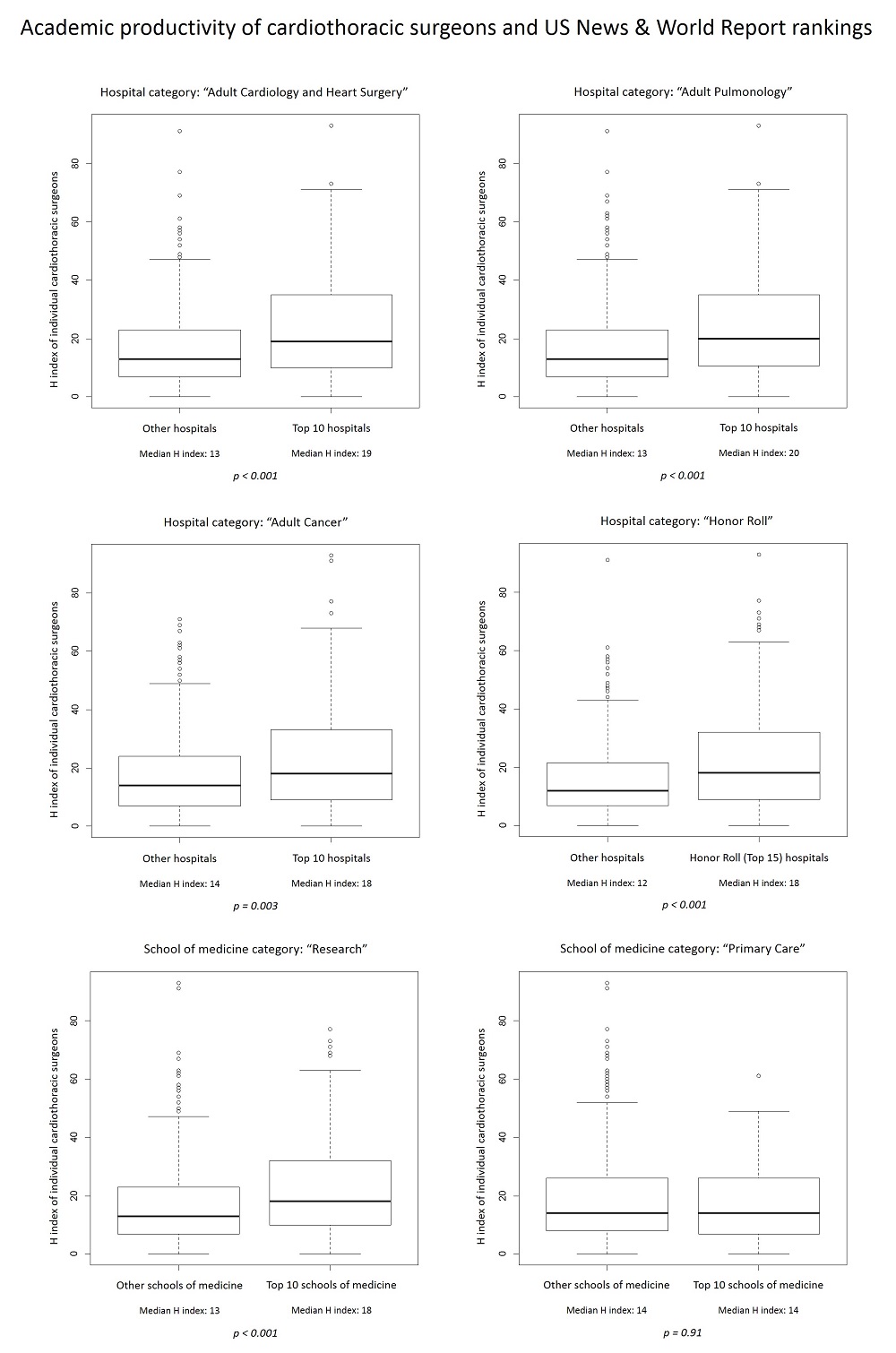C. Rosati1, N. P. Valsangkar1, P. N. Vardas1, L. Chabtini1, M. W. Turrentine1, J. W. Brown1, L. G. Koniaris1 1Indiana University School Of Medicine,Department Of Surgery,Indianapolis, IN, USA
Introduction: Several criteria are currently used to evaluate medical institutions and individual physicians as well. We aimed to investigate which tools might represent valid correlates of the academic productivity of cardiothoracic (CT) surgeons.
Methods: We collected data about 57 leading academic CT surgical groups in the US, including: seniority (i.e. time since graduation from medical school), H index and institutional role (i.e. being chairperson of the division) of each individual surgeon; hospital and medical school rankings according to the 2015-2016 US News & World Report; ranking by NIH funding (granted to either their medical school, department of surgery, or affiliated department of internal medicine), as provided by the 2014 report of the Blue Ridge Institute for Medical Research; and designation as either an independent CT department or as a division of a broader department of surgery.
Results: Among 663 CT surgeons, academic productivity, as measured by the median H index of each group, was significantly different among the 57 institutions (p < 0.001). Several hospital categories (‘Adult Cardiology and Heart Surgery’, ‘Adult Pulmonology’, ‘Adult Cancer’, and ‘Honor Roll’), as well as the medical school ranking for research (but not for primary care), from the US News & World Report were significantly associated with differences in academic productivity (see Graphic). Ranking based on NIH funding was not a significant correlate, either considering funding provided to the departments of surgery (top 10 institutions vs. other: median H index 14.5 vs. 14; p = 0.94), to medical schools (17 vs. 14; p = 0.26), or to the affiliated departments of internal medicine (15 vs. 14; p = 0.55), respectively. Designation as an independent department (median H index: 15) was not associated with a different academic productivity than designation as a division of a broader department of surgery (median H index: 14; p = 0.58). When the division chairperson had an individual H index of at least 50, the whole CT surgical group was overall more productive (median H index: 18) than those groups with a chairperson whose H index was less than 50 (median H index: 14; p = 0.005). Seniority was never found to be significantly different in any of the above mentioned comparisons.
Conclusion: The US News & World Report rankings provide a good representation of the academic productivity of cardiothoracic surgical groups, while NIH funding rankings do not. Designation as a stand-alone department or as a dependent division was found to be uninfluential. The individual productivity of the chairperson is strongly correlated with the overall productivity of the whole group.
